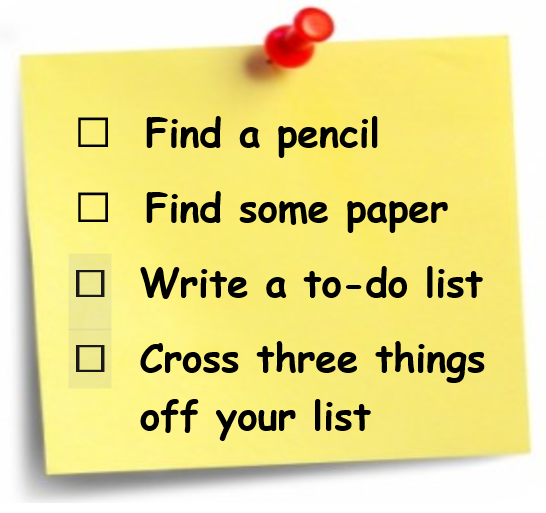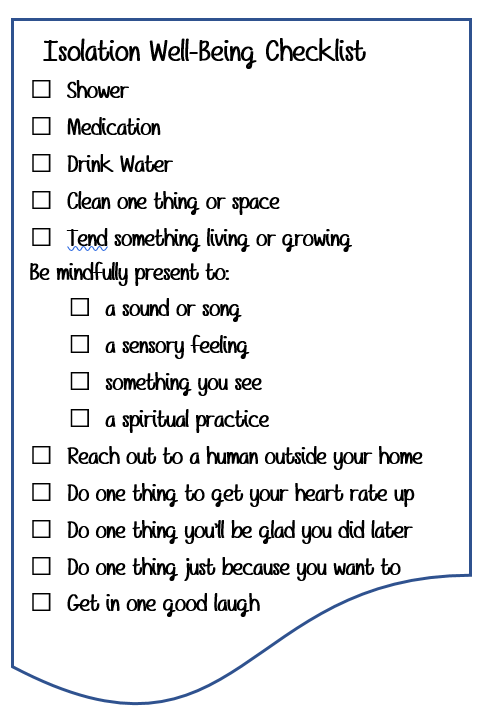In 2015 Forbes reported a Bureau of Labor statistic affirming that, in 1930, the average American woman owned 9 outfits. This, as opposed to a current day figure of about 30 outfits – one for each day of the month.
In 2016 a survey of 1,000 American women was conducted by ClosetMaid. It found that women only really like 10 percent of their wardrobe. It also found that one in ten women are depressed when they open their closet and 40 percent say that they don’t like any of their clothes.
As Americans, we are blessed with an abundance of choices when it comes to clothing and fashion. A broad variety of style, quality and affordability surround us. Yet, we can surmise from these two studies that, in the U.S., we have more clothing than ever before and are less satisfied with what we have. So where does the disconnect lie? How do we get from Point A – the clothing that we own; to Point B – happiness?

There are many explanations centered around the social and psychological motivations behind our large wardrobes and our dissatisfaction. Compulsive shopping, ecological reasoning, “retail therapy”, depression and loss are just a few theories offered.
The anxiety experienced when contemplating and processing the variety and abundance we face upon viewing our overcrowded wardrobes adds a real neurological strain. We end up starting our days stressed-out even before we walk out our front door.
Although it remains important to address the underlying reasons for overwhelmed and overwhelming closets and spaces, professional organizers (unlike therapists) also get the opportunity to directly address the physical issues as well. Addressing spacial congestion is empowering, encouraging a feeling of control over the environment, a feeling that can help ward off anxiety and depression.
Here are three simple tips for actions that you can take today that will make a difference every day.
Start with unused hangers and empty boxes that take up space for absolutely no reason. A dozen empty hangers can take up to a foot of space on your hanging rod – a whole foot! There may be many hiding between crowded garments so be sure to filter through everything. Next, begin at one end and review each garment. Remove all items that can be tossed or donated; toss the trash, then bag and label the rest for “Donation”.
Unless you live in a temperate climate where your entire wardrobe is versatile for year-round use, there are very few reasons to keep all of your clothing at hand in your closet all of the time. Separate items you are keeping into two seasonal categories: Fall/Winter and Spring/Summer. Keep the current half at hand in your closets and dressers. Store the other half in plastic bins or space bags. Take advantage of the seasonal switch to purge items that you no longer want before storing the rest.
Okay, I will admit that this may sound a little “organizer”-geeky, but try it out before you scoff. Imagine you are looking for your favorite pair of black pants. The ones that fit just right and aren’t too long or too short. Do you have to go in between all your tight spaces in your closet to find them before realizing they are at the cleaners? Not if your closet is color coordinated. You will simply go through the section of black pants. Not there? Then they are in the laundry. Need to put together a quick outfit? Easy to do when your eyes are simply matching colors and not hunting between randomly hung, tightly crammed fabrics.
As parents face the annual back to school routine this year, perhaps we need to revise the standard preparation for the first day of school. Rather than discuss how to organize your physical “stuff” for school, we are going to discuss the ABC’s for organizing a plan to address stress during this challenging time.
ASSESS
Many parents experienced the challenge of online learning (aka – distance learning or at-home learning) with their children this spring. As school openings fast approach, it is a good time to stop and assess how that online learning experience went for your family. What worked well? What did not work well? And most importantly, why didn’t it work? The best way to find a solution to a problem is to understand the root cause of the problem. If your child was too distracted or had difficulty paying attention to online sessions, think about why he or she was distracted and do your best to address that distraction. Was their sibling doing their lesson in the same room? Were toys in the room that caught their attention? Was background noise a disturbance? Perhaps switching the room for their online learning or putting away some toys may lessen the distraction. Wearing ear buds might reduce the background noise. There is no one size fits all answer to this issue or any other issue you may have encountered. The key is to figure out why the situation did not work so you can identify a solution that will work for your family. And, for those who have not been through online learning as of yet, reach out to family and friends who have experienced it and get their input on what worked for them to see if it can work for your family.
BALANCE
Dealing with our children can be challenging in general. So, having to deal with online learning or blended learning, in addition to normal daily stresses, can be overwhelming for some. Many parents are also trying to work from home which compounds that stress. Finding balance amidst the chaos may be beneficial. Take time before school begins to identify ways to balance the hectic environment that may exist during the school day. A quick 5 to 10-minute stress-reducing activity should provide relief. The list below is in no way all inclusive.
Also, our children are not immune to the stress that online learning may create. They may find some of the items above useful when they encounter a feeling of anxiety. Here are a few additional suggestions:
Figure out what works best for you and for each of your family members.
COMMUNICATE
Creating a productive environment for both you and your kids is a goal for many parents. Open communication can contribute to that goal. Does your spouse know you have a 10am conference call and he or she needs to handle any issues that may pop up during that call? Does your son have a test tomorrow and needs quiet time to study? Is your daughter struggling with a lesson and needs additional tutoring? Having open discussions about the needs of each family member can go a long way to reducing stress during the day. The discussions don’t need to be formal. While clearing the dinner table ask a question like “Do you need anything from me to prepare for tomorrow?” or “Are you stressing about anything and, if so, how can I help?” Speaking to someone about their needs can help ease their tension. And don’t forget to let your family know of your needs as well. If they don’t ask you what you need, you can bring it up to them. Let them know that you have that conference call at 10am and ask that you not be disturbed for that hour. Remind them that the dog needs to be walked at lunchtime and ask who can help with that task. Communicating effectively will let each family member know you are all there to support each other.
Using the ABC’s above may not eliminate all the stressors you will face this school year. However, utilizing Assess and Communicate as proactive steps to help prevent stress, and incorporating Balance when stressful situations arise, may help you get back on track and allow you to have a productive day.
Karen Kabara
Your Tasks – Our Time, Inc

| Between the ups and downs of the COVID-19 pandemic and the political tension, the past several months have been especially stressful. There are many ways that people handle stress. Some make To-Do lists. |

| For instance, what does one do with old (clean) socks? You know the ones… the dryer has eaten the mate or the elastic has lost its stretch. Below are some ideas of what you can do with socks. Not only can you enjoy some of these projects, beautify your home and/or enlist the aid of any children you may have lounging around the house feeling bored, these projects are a good way to reuse old socks. Thank you to Megan Willett and Business Insider for the post on 61 Things You Can Do With Your Old Mismatched Socks. Two that I found particularly interesting were the No-Sew Sock Puppy and the No-Sew Sock Face Mask. |

| We live in trying times. Even though businesses and restaurants are slowly opening, many people feel quite alone and isolated from the world. Find a phone buddy. Make yourself a To-Do list and share it with your phone buddy. Did you check off at least one thing on the list? Fabulous! Share it with your phone buddy. If that person is not available, tell your cat or your dog or look in the mirror and tell yourself. Celebrate your accomplishments. |

| When you have taken time to decompress and replenish your spirit, learn about the multiple ways that we can all work for social justice and change in our world. But, most importantly, be gentle with yourself. Stay well, stay safe and stay home if you are able… and, if you are one of the many who must go to work to or who chooses to volunteer to keep us safe, healthy, fed, informed or otherwise (relatively) sane, thank you. |
Wishing is a good thing! It creates a vision of what we’d like for the future. Often the vision motivates us into action to make it come true. But the tricky part about a wish, compared to a goal, is sometimes we want our wish to magically happen without our taking action. Can you relate?
Here are some examples of Wishful Thinking that might be contributing to the clutter in your home:
The clothes you wish you could get into two or three sizes down.
The workout equipment you wish you would use.
The craft projects you wish you’d have to time to work on.
The second home you wish you could buy.
Charitable shops have been closed for some time due to the pandemic, and now that they’re opened, they are inundated with goods. Some people are reluctant to donate to charities for fear their items will be thrown in the trash. I’ve been told by Goodwill workers that they are storing items in trailers, however that statement is unverified. Another option for items you wish to sell or give away for free are websites like Freecycle.org and CraigsList.com, or local pages on Facebook Marketplace. Since summer is here, you can find ways exchange items with social distancing.
Wishful Thinking can be shifted to Realistic Thinking. If you have trouble getting started, consider the help of a professional organizer. Many are doing virtual organizing and can help you shift your thinking so letting go is easier. YOUR WISH FOR A CLUTTER-FREE HOME CAN COME TRUE!


While we’ve been sheltering-in-place and social-distancing, I’ve been thinking about all the traveling I’ve done. Whether it’s a quick overnight or weekend trip or something longer, like 2 – 3 weeks, I’ve been remembering my wallet and how it gets filled with all sorts of paper not related to anything I needed to carry with me.
My wallet has been filled with receipts, ticket stubs, candy wrappers, etc. Were all these extraneous things necessary to stuff into my wallet? For me, this was the best place to keep all these items temporarily until I got home, when I could empty my wallet, file what I needed to keep in their respective “homes”, and discard the rest (I sure didn’t need to keep a candy wrapper). Do many of you have things like this in your wallet all the time?
How much you can fit in your wallet is really a metaphor for how much you can fit in your surroundings. Are you ready to “Empty Your Wallet” (and I don’t mean emptying it of money)? I’m talking about your wallet representing how light you would feel if you emptied your life of all the extraneous things that don’t need to be kept in it. What is actually important to you? What do you really need, not want, to keep in your life to make it seem less weighty? The 4 benefits of having an “empty wallet” are:
“Do not wait: the time will never be ‘just right’. Start where you stand, and work whatever tools you may have at your command and better tools will be found as you go along.” Napoleon Hill
Now is Your Time to “Empty Your Wallet”
First, we want to acknowledge that walking up to a perfect stranger and selling the idea of your business isn’t easy. Not everyone will be happy to see you and you need to be willing to expect and accept some rejection. The more you do it, the more comfortable you will feel, and when it starts to pay off and your calendar starts filling up, you’ll be plenty glad that you went for it!
Networking is a marathon, not a sprint.
People need to get to know and trust you before they will use your business or refer you to others. Show up consistently and you will be rewarded!
“Networking is an investment in your business. It takes time and when done correctly can yield great results for years to come.” – Diane Hilbig
THE FOLLOWING NETWORKING TIPS WILL COME IN HANDY:
Always set goals. Goals can be small; schedule 3 one-on-one meetings or get 10 email addresses, but always start your day with a purpose. This helps you hold yourself accountable and helps you track your improved networking skills!
Show genuine interest in other businesses. Be prepared with a list of questions to find out what their problem points are so you can craft the best message to address their needs. When you ask questions of other businesses, it shows you are interested in them and want to learn from them as well.
Give a little, get a little. Build allies and refer business to other members and they will be much more likely to return the favor.
Take notes. Promptly after a meeting, make note of who you spoke with, their position, any other names that were mentioned, personal information, and any interesting anecdotes they may have mentioned. These notes will be invaluable when you draft a follow up email and for future meetings.
Follow up! Never leave an office after a first meeting without setting up a one on one meeting for the near future.
Always wear branded clothing. This is free advertising that invites the question, “What is ___”?” You may be surprised by how much business can come from just walking around and showing off your company name.
No matter who you are meeting with, always be sure to travel with the following items:
• Business cards – always keep in your wallet and car.
• Brochures – keep some extra marketing folders and brochures specific to target industries available for that unexpected encounter with a potential referral partner.
• Giveaways – whether it’s sunglasses, pens, or magnets, branded items make a lasting impression; more so than business cards, and are visual reminders to use our service.
• A good attitude and a smile! – You are the face of your business. Impress everyone you meet with your cheery demeanor and your passion for the business, the environment, and your community.